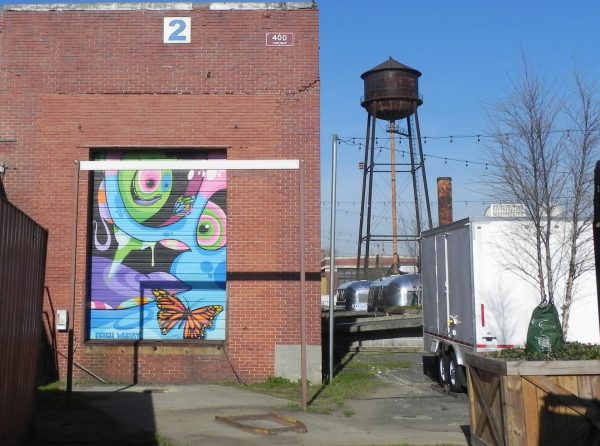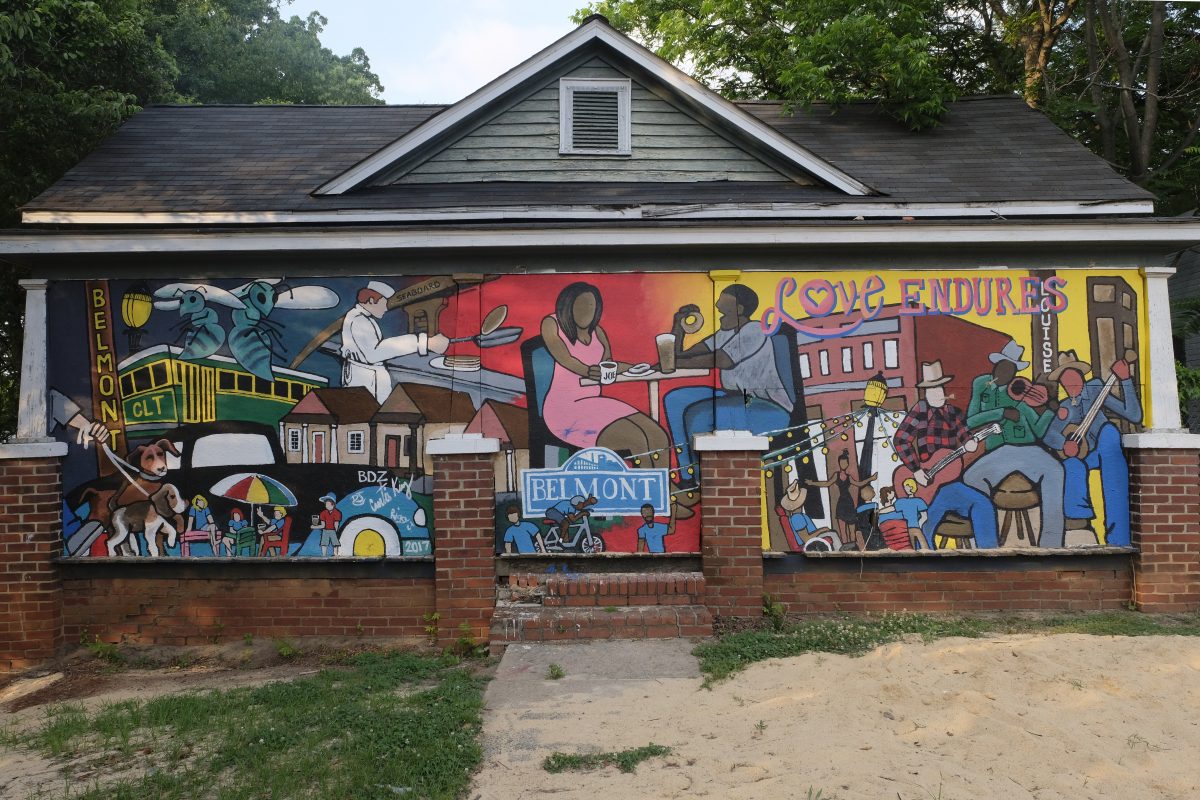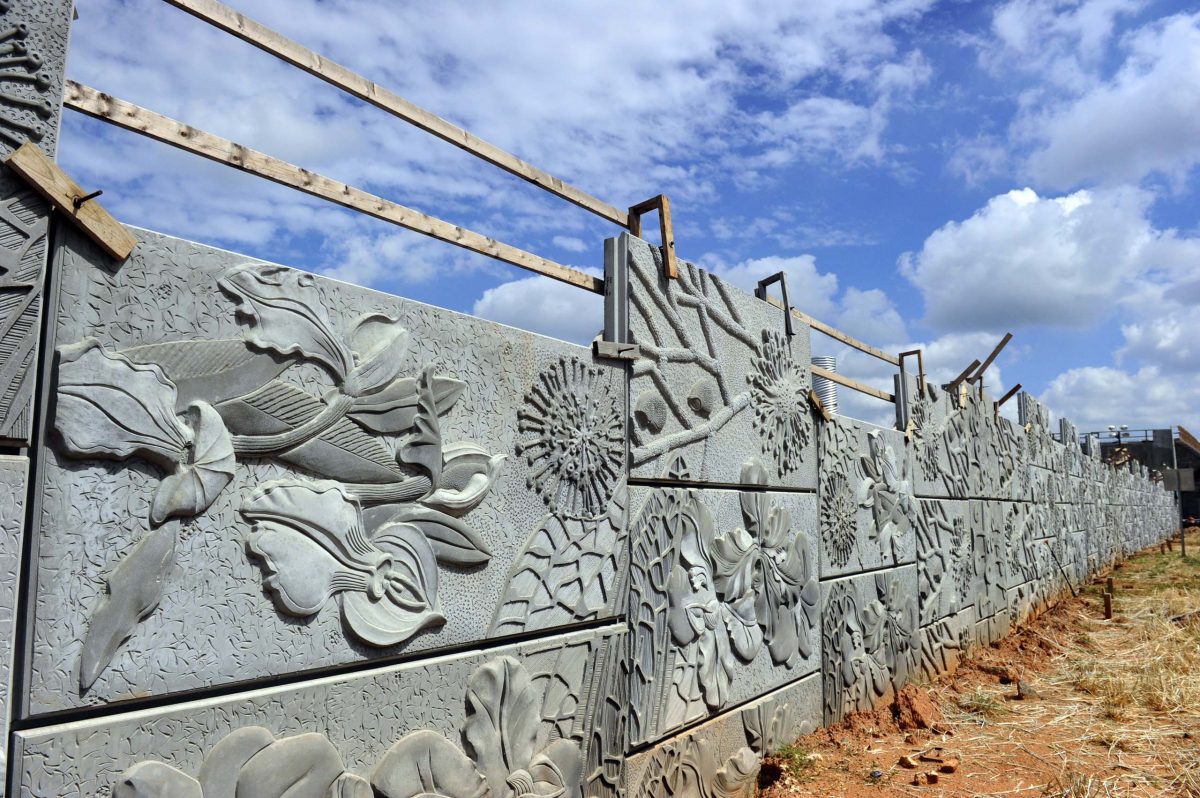Charlotte’s arts scene is growing – and at a crossroads

Thousands are expected to gather in Charlotte’s historic Plaza-Midwood neighborhood this weekend, attracted by bold visual art and nontraditional performances representing a diverse array of artists.
The three-day BOOM festival, a self-described “movement born from a belief in the explosive power of art to unite and strengthen our community,” enters its fourth year buoyed by support from area residents, corporate donors and foundations with an appetite for edgy and innovative displays.
More than a decade ago the BOOM festival, or one similar to it, might not have emerged in Charlotte. But as rapid growth and development reshapes Charlotte’s urban personality, the arts scene is expanding and becoming more dynamic.
[What are key players saying? Read more about Charlotte’s art scene online here.]
“We’re not New York, and that’s the best thing about us,” said arts advocate Jessica Moss, whose projects include the Roll Up residency program for artists of color. “We are uniquely us. There is so much opportunity to figure out what that is and what that looks like.”

A mural in the Belmont neighborhood. Photo: Nancy Pierce
At the same time, groups are searching for funding to power the increase in arts programming, even as overall public and private sources of funding still haven’t recovered to pre-recession levels.
In uptown Charlotte, arts institutions cluster in striking buildings between offices and apartment towers: The Mint Museum, the Bechtler Museum of Modern Art, the Harvey B. Gantt Center for African- American Arts + Culture and the McColl Center for Art + Innovation.
Beyond the doors of these major institutions, an emerging segment of Charlotte’s visual and performing arts community is generating new, more experimental projects.
“There is a disconnect between the DIY scene and the more institutionalized arts,” said Varian Shrum, community manager of Camp North End. The development growing from a historic industrial site near uptown is providing space to emerging and unconventional artists. “There is not a lot of in between.”
But even as Charlotte’s art landscape is growing, overall public and private funding has stagnated.
According to the Arts & Science Council, the leading Charlotte-Mecklenburg arts advocacy and funding organization, the cultural community will face a crisis without a new source of public money.
The ASC recently issued a warning: Some large and small organizations could collapse if nothing is done.Valecia McDowell, the group’s incoming chair, recently told Mecklenburg commissioners the local arts community is approaching a “crisis point.”
Earlier this year, the ASC proposed a designated countywide sales tax that could generate an estimated $20 million annually.
Under the proposal, the money would come from an additional quarter-cent sales tax authorized a decade ago by the state legislature. The arts portion would come from a tenth-of-a-penny slice of the quarter-cent tax, with the remaining $30 million or so available for the Mecklenburg Board of County Commissioners to decide how to spend.
Commissioners would have to put the sales tax increase on the ballot for a public vote, which could come this year.
“We are trying to make sure we keep facilities open and have programming,” said ASC president Robert Bush, pointing out that workplace giving, once the largest source of donations, has dramatically declined. “We are encouraged that (county commissioners) understand the situation we are in. The cultural sector has been critical to the quality of life we enjoy in this area.”
Since the recession, ASC revenue has dropped from more than $16 million annually to about $10 million. As a result, the group’s grants to arts organizations have plummeted, from $13.2 million a decade ago to $6.8 million last year.

Public art along the Blue Line extension in Charlotte. Photo: Nancy Pierce
New voices, venues
In 2015, developer Crescent Communities offered an artist-led pilot program in an empty Goodyear Tire Store on Stonewall Street until it was bulldozed. What began as a three-month experiment has become Goodyear Arts, a nonprofit program that provides residency programs and studio space for artists. Its current location at Camp North End is donated by the developers, ATCO Properties and Management.
Today, Goodyear Arts offers at least a dozen paid, two-month residencies to artists, as well as 25 visual and performance art studios. It’s created an artist collective that produces gallery exhibitions that regularly attract a few hundred people.
The organization’s motto appears prominently on an entry wall: “Artists need time, space, money and community.”
“So much is happening,” said visual artist Amy Bagwell, one of the founders of Goodyear Arts and an art professor at Central Piedmont Community College. “Charlotte has traditionally been pretty conservative, not taking chances. People at the street-level are bubbling up and taking more and more chances.”
Five years ago, for example, the Latin American Contemporary Arts (LaCa) Projects opened the first gallery to promote and exhibit Latin American artists in Charlotte, which has one of the fastest growing Hispanic and Latino populations in the country. The gallery off West Morehead Street received Charlotte Magazine’s 2018 Best of the Best Award for art galleries.
Other arts initiatives launched over the past decade include:
Dupp & Swat
Davita Galloway and her brother, Dion, opened the doors to Dupp & Swat nine years ago in the NoDa community to provide a nurturing space for visual and performance artists of color. “We are the ‘yes’ that a lot of artists and creatives need,” said Galloway, who left NoDa after rent became too expensive and now has a space at Camp North End. “A lot of times artists of color are denied.”
Talking Walls Festival
The first four-day Talking Walls Festival in 2018 brought together 17 local, national and international mural artists to paint the walls of various businesses in Uptown and center city neighborhoods. The idea was conceived by Alex DeLarge of Southern Tiger Collective and Kevin Taylor of IMEK Studios, who opened their art and design studios within the past few years. Their goal is to eliminate “beige” walls and improve Charlotte’s visual landscape with energizing and thought-provoking art. The murals will remain on the walls for at least a year.
Durag Fest
At the inaugural Durag Fest, an arts gathering in 2018 at Camp North End, more than 1,000 people showed up to celebrate the colorful head coverings. Spearheaded by artist Dammit Wesley, the event also featured the work of artists connected with Wesley’s Black Market studio “I see a very bright future for the people who are operating on the fringes of the arts scene,” said Wesley.
Sphere Series
At the first event in October 2017, participants learned about art collecting during sessions at the Bechtler Museum of Modern Art; the second free event a year later focused on murals. Founded by Queens University art professor Hilary Burt, the Sphere Series is a once-a-year effort to educate and engage the community in various aspects of visual art. It has sparked fee-based monthly art classes.
“I felt like the community was really disconnected and there were really exciting things happening,” said Burt. “I feel like with education comes understanding, and with understanding comes support.”
Creative Mornings/Charlotte is Creative
For three years, the free monthly breakfast series CreativeMornings has attracted hundreds of people to venues across Charlotte to hear speakers and celebrate the city’s creative talent. Hosts Matt Olin and Tim Miner, who applied to bring the chapter of the national series to Charlotte, also formed the non-profit Charlotte is Creative.
“We see part of our job as helping creatives and businesses talk and understand each other’s values,” said Miner. “What we are hoping is that businesses find ways to incubate and lower price points for creatives to have businesses inside of retail. That creative spirit adds color and interest and personality to the community.”
Connecting artists and businesses is increasingly important, said Miner, as neighborhoods such as NoDa – which attracted artists because of lower costs and was recognized as an informal arts district – are becoming more expensive as the result of redevelopment.